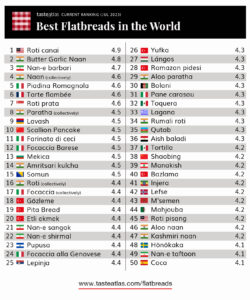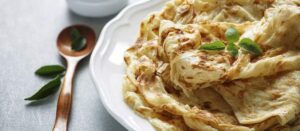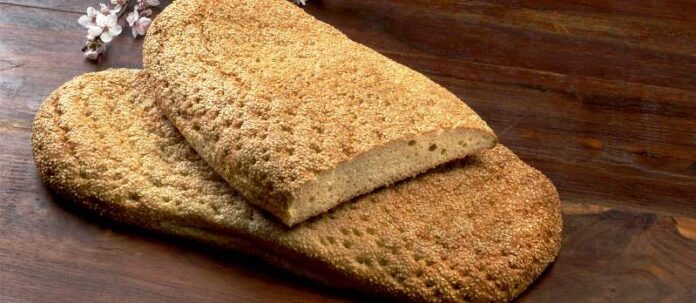TasteAtlas food rankings are based on the ratings of the TasteAtlas audience, with a series of mechanisms that recognize real users and that ignore bot, nationalist or local patriotic ratings, and give additional value to the ratings of users that the system recognizes as knowledgeable. For the “100 Best Rated Flatbreads in the World” list until July 05, 2023, 6,959 ratings were recorded, of which 4,369 were recognized by the system as legitimate. TasteAtlas Rankings should not be seen as the final global conclusion about food. Their purpose is to promote excellent local foods, instill pride in traditional dishes, and arouse curiosity about dishes you haven’t tried.

The ‘Gagana’ Λαγάνα from Greece
Lagana is a traditional Greek flatbread that is usually associated with Clean Monday—the first day of Lent. The bread is made with wheat flour, and although it was primarily unleavened and did not include dairy or oil, modern varieties are often prepared with olive oil and yeast.
The bread is oval-shaped and flat, and the top is typically pressed with fingers to create small indentations. Optional ingredients often include olives and various herbs, but sesame seeds are the most common topping. The exact origin of this ancient Greek bread is still vague, but its first written reference dates back to 5th century BC when it was mentioned in a poem written by a Greek poet Aristophanes, while the name lagana stems from the ancient Greco-Roman term laganon that denoted a similar thin flatbread.

On the top is Roti canai MALAYSIA and 4 more regions
Roti canai is a traditional pan-fried flatbread made with flour, water, eggs, and fat of Indian origin, also consumed in Malaysia, Singapore, Indonesia, Brunei, and Thailand. The dough for roti canai is repeatedly folded, so the final product has a layered texture, a soft interior, and a crispy outer layer.
The most common fat used in roti canai is ghee, the traditional Indian clarified butter. It is believed that the dish originated in India when the Indian laborers who migrated to Malaysia brought the recipe and the tradition of preparing this crispy pastry to the foreign country.














